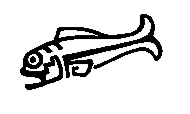Ishi c. 1861-1916, ひとりのヤヒ先住民
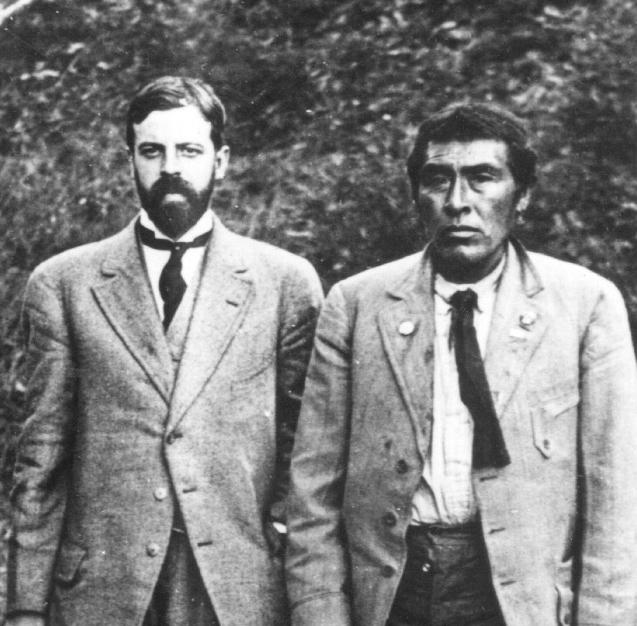
左:35歳のクローバーと、右:イシ(推計
50歳; ca.1861-1916)1911年撮影(ウィキコモンズ)
「イシの物語」と言うと、歴史家やその他の権威筋が、既知の事柄を、一貫した最終的な全体像
や形づくることを目的としてかきあつめ、再話した、『決定版イシ物語』を意味しうるかもしれない。しかし、私たちはそのような展望を採用することはできな
い。物語は未完であり、かつ増殖している——ジェームズ・クリフォード「イシの物語」『リターンズ』2020:103.
このページは「ア ルフレッド・ルイス・クローバー(とヤヒ先住民イシ)」からスピンオフしたのも のである(→「アルフレッド・ルイス・クローバー」「ホアン・ドロレス」)。
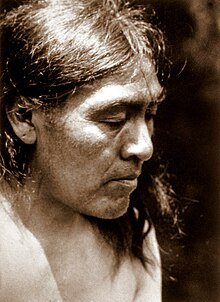 Ishi (c. 1861
– March 25, 1916) was the last known member of the Native American Yahi
people from the present-day state of California in the United States.
The rest of the Yahi (as well as many members of their parent tribe,
the Yana) were killed in the California genocide in the 19th century.
Ishi, who was widely described as the "last wild Indian" in the United
States, lived most of his life isolated from modern North American
culture. In 1911, aged 50, he emerged at a barn and corral, 2 mi (3.2
km) from downtown Oroville, California. Ishi (c. 1861
– March 25, 1916) was the last known member of the Native American Yahi
people from the present-day state of California in the United States.
The rest of the Yahi (as well as many members of their parent tribe,
the Yana) were killed in the California genocide in the 19th century.
Ishi, who was widely described as the "last wild Indian" in the United
States, lived most of his life isolated from modern North American
culture. In 1911, aged 50, he emerged at a barn and corral, 2 mi (3.2
km) from downtown Oroville, California.Ishi, which means "man" in the Yana language, is an adopted name. The anthropologist Alfred Kroeber gave him this name because in the Yahi culture, tradition demanded that he not speak his own name until formally introduced by another Yahi.[2] When asked his name, he said: "I have none, because there were no people to name me," meaning that there was no other Yahi to speak his name on his behalf. Ishi was taken in by anthropologists at the University of California, Berkeley, who both studied him and hired him as a janitor. He lived most of his remaining five years in a university building in San Francisco. His life was depicted and discussed in multiple films and books, notably the biographical account Ishi in Two Worlds published by Theodora Kroeber in 1961.[3][4][5][6] |
 イシ(1861年頃 -
1916年3月25日)は、現在のアメリカ合衆国カリフォルニア州に住んでいたネイティブ・アメリカン、ヤヒ族の最後のメンバーとして知られている。残り
のヤヒ族(および彼らの親部族であるヤナ族の多くのメンバー)は、19世紀のカリフォルニア大虐殺で殺された。アメリカ最後の野生のインディアン」と評さ
れたイシは、その生涯のほとんどを、現代の北米文化から隔離されて過ごした。1911年、50歳になった彼は、カリフォルニア州オロビルのダウンタウンか
ら3.2km離れた納屋と家畜小屋に姿を現した。 イシ(1861年頃 -
1916年3月25日)は、現在のアメリカ合衆国カリフォルニア州に住んでいたネイティブ・アメリカン、ヤヒ族の最後のメンバーとして知られている。残り
のヤヒ族(および彼らの親部族であるヤナ族の多くのメンバー)は、19世紀のカリフォルニア大虐殺で殺された。アメリカ最後の野生のインディアン」と評さ
れたイシは、その生涯のほとんどを、現代の北米文化から隔離されて過ごした。1911年、50歳になった彼は、カリフォルニア州オロビルのダウンタウンか
ら3.2km離れた納屋と家畜小屋に姿を現した。ヤナ語で「男」を意味する「イシ」は養子名である。人類学者のアルフレッド・クローバーが 彼にこの名前をつけたのは、ヤヒ族の文化では、他のヤヒ族から正 式に紹介されるまで自分の名前を口にしてはならないという伝統があったからである[2]: 「と答えた。つまり、彼の名前を代弁してくれる他のヤヒ族がいなかったということである。 イシはカリフォルニア大学バークレー校の人類学者に引き取られ、研究されるとともに清掃員として雇われた。彼は残りの5年のほとんどをサンフランシスコの 大学の建物で暮らした。彼の人生は複数の映画や本で描かれ、議論された。特に1961年にセオドラ・クローバーによって出版された伝記『Ishi in Two Worlds』は有名である[3][4][5][6]。 |
| Biography Early life 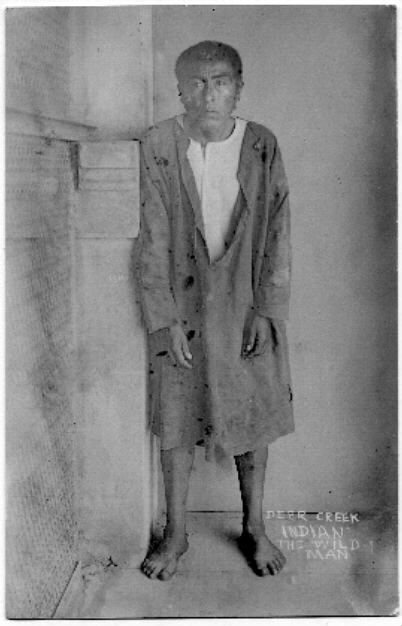 Ishi, August 29, 1911: Deer Creek Indian The Wild Man[7] In 1865,[8] The Yahi were attacked in the Three Knolls Massacre, in which 40 of their members were killed. Although 33 Yahi survived to escape, cattlemen killed about half of the survivors. The last survivors, including Ishi and his family, went into hiding for the next 44 years. Their tribe was popularly believed to be extinct.[9] Prior to the California Gold Rush of 1848–1855, the Yahi population probably numbered several hundred, while the total Yana in the larger region numbered around 3,000.[10] The gold rush brought tens of thousands of miners and settlers to northern California, putting pressure on native populations. Gold mining damaged water supplies and killed fish; deer became more scarce. The settlers brought new infectious diseases such as smallpox and measles.[11] The northern Yana group became extinct while the central and southern groups (who later became part of Redding Rancheria) and Yahi populations dropped dramatically. Searching for food, they came into conflict with settlers, who set bounties of 50 cents per scalp and 5 dollars per head on the natives. In 1865, white settlers attacked a group of Yahi while they were still asleep.[12] Richard Burrill wrote, in Ishi Rediscovered: "In 1865, near the Yahi's special place, Black Rock, the waters of Mill Creek turned red at the Three Knolls Massacre. 'Sixteen' or 'seventeen' Indian fighters killed about forty Yahi, as part of a retaliatory attack for two white women and a man killed at the Workman's household on Lower Concow Creek near Oroville. Eleven of the Indian fighters that day were Robert A. Anderson, Harmon (Hi) Good, Sim Moak, Hardy Thomasson, Jack Houser, Henry Curtis, his brother Frank Curtis, as well as Tom Gore, Bill Matthews, and William Merithew. W. J. Seagraves visited the site, too, but some time after the battle had been fought. Robert Anderson wrote, "Into the stream they leaped, but few got out alive. Instead many dead bodies floated down the rapid current." One captive Indian woman named Mariah from Big Meadows (Lake Almanor today), was one of those who did escape. The Three Knolls massacre is also described in Theodora Kroeber's Ishi in Two Worlds. Since then more has been learned. It is estimated that with this massacre, Ishi's entire cultural group, the Yana/Yahi, may have been reduced to about sixty individuals. From 1859 to 1911, Ishi's remote band became more and more infiltrated by non-Yahi Indian representatives, such as Wintun, Nomlaki, and Pit River individuals. In 1879, the federal government started Indian boarding schools in California. Some men from the reservations became renegades in the hills. Volunteers among the settlers and military troops carried out additional campaigns against the northern California Indian tribes during that period.[13] In late 1908, a group of surveyors came across the camp inhabited by two men, a middle-aged woman, and an elderly woman. These were Ishi, his uncle, his mother, and a woman who was either a relative or Ishi's wife. The former three fled while the elderly woman tried to hide herself, as she was crippled and unable to flee. The surveyors ransacked the camp, taking fur capes, arrows, bows, and nets. When Ishi appeared near Oroville three years later, he was alone and communicated through mime that his three companions had all died, his uncle and mother by drowning. [14] 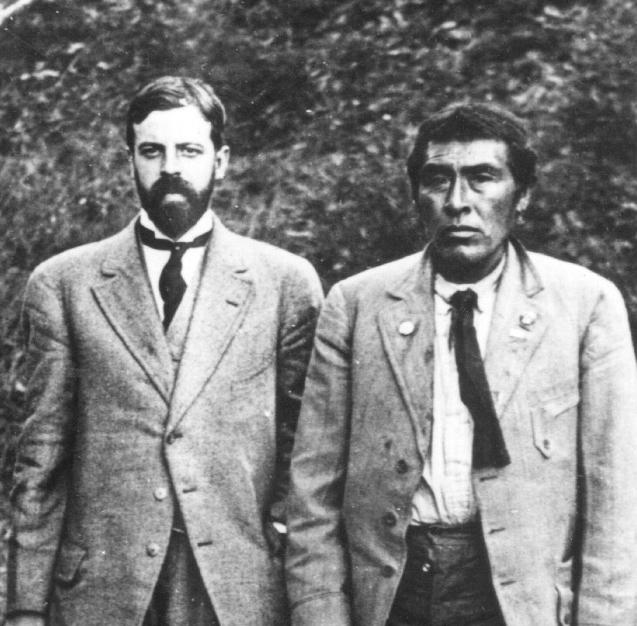 A. L. Kroeber, Ishi[15] (Cropped from: Sam Batwai, Alfred L. Kroeber, and Ishi, at Parnassus Heights in 1911) [10] Arrival into European American society After the 1908 encounter, Ishi spent three more years in the wilderness. It is unknown exactly when the rest of his family died. Starving and alone, Ishi, at around the age of 50, emerged on August 29, 1911, at the Charles Ward[16] slaughterhouse back corral[17] near Oroville, California, after forest fires in the area.[18][19] He was found pre-sunset[20][21] by Floyd Hefner, son of the next-door dairy owner (who was in town), who was "hanging out", and who went to harness the horses to the wagon for the ride back to Oroville, for the workers and meat deliveries.[22] Witnessing slaughterhouse workers included Lewis "Diamond Dick" Cassings, a "drugstore cowboy". Later, after Sheriff J.B. Webber arrived, the Sheriff directed Adolph Kessler, a nineteen-year-old slaughterhouse worker, to handcuff Ishi, who smiled and complied.[23][24][25][26][27][28] The "wild man" caught the imagination and attention of thousands of onlookers and curiosity seekers. University of California, Berkeley anthropology professors read about him and "brought him"[29] to the Affiliated Colleges Museum (1903–1931),[18] in an old law school building on the University of California's Affiliated Colleges campus[30] on Parnassus Heights, San Francisco. Studied by the university,[31] Ishi also worked as a janitor and lived at the museum the remaining five years of his life. In October 1911, Ishi, Sam Batwi, T. T. Waterman, and A. L. Kroeber, went to the Orpheum Opera House in San Francisco to see Lily Lena (Alice Mary Ann Mathilda Archer, born 1877)[32][33][34][35] the "London Songbird," known for "kaleidoscopic" costume changes. Lena gave Ishi a piece of gum as a token.[36] On May 13, 1914,[37] Ishi, T. T. Waterman, A.L. Kroeber, Dr. Saxton Pope, and Saxton Pope Jr. (11 years old), took Southern Pacific's Cascade Limited overnight train, from the Oakland Mole and Pier to Vina, California, on a trek in the homelands of the Deer Creek area of Tehama county,[38] researching and mapping for the University of California,[10][39] fleeing on May 30, 1914, during the Lassen Peak volcano eruption. T.T. Waterman and A.L. Kroeber, director of the museum, studied Ishi closely over the years and interviewed him at length in an effort to reconstruct Yahi culture. He described family units, naming patterns, and the ceremonies that he knew. Much tradition had already been lost when he was growing up, as there were few older survivors in his group. He identified material items and showed the techniques by which they were made. In February 1915, during the Panama–Pacific International Exposition, Ishi was filmed in the Sutro Forest with the actress Grace Darling for Hearst-Selig News Pictorial, No. 30.[40][41] In June 1915, for three months,[10] Ishi lived in Berkeley with the anthropologist Thomas Talbot Waterman and his family.[42] 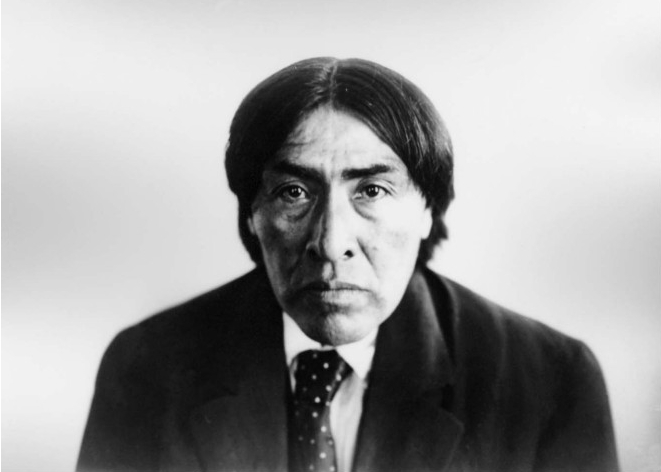 Ishi, 1912 In the summer of 1915,[10] Ishi was interviewed on his native Yana language, which was recorded and studied by the linguist Edward Sapir, who had previously done work on the northern dialects.[43] These wax cylinders have had their sound recovered by Carl Haber's and Vitaliy Fadeyev's optical IRENE technology.[44][45][46][47] Death Lacking acquired immunity to common diseases, Ishi was often ill. He was treated by Saxton T. Pope, a professor of medicine at UCSF. Pope became a close friend of Ishi, and learned from him how to make bows and arrows in the Yahi way. He and Ishi often hunted together. Ishi died of tuberculosis on March 25, 1916.[48][49][1][50][51] It is said that his last words were, "You stay. I go."[52] Kroeber, who was in New York at the time of Ishi's final illness, tried to prevent an autopsy on his body, sending letters and telegrams strongly stating his objections. He believed Yahi tradition called for the body to remain intact. However, Saxton Pope, following hospital protocol, performed the autopsy regardless. Ishi's brain was preserved and his body cremated, in the mistaken belief that cremation was the traditional Yahi practice. His friends placed several items with his remains before cremation: "one of his bows, five arrows, a basket of acorn meal, a boxfull of shell bead money, a purse full of tobacco, three rings, and some obsidian flakes." Ishi's remains, in a deerskin-wrapped Pueblo Indian pottery jar, were interred at Mount Olivet Cemetery in Colma, California, near San Francisco.[53] Kroeber sent Ishi's preserved brain to the Smithsonian Institution in 1917. It was held there until August 10, 2000, when the Smithsonian repatriated it to the descendants of the Redding Rancheria and Pit River tribes. This was in accordance with the National Museum of the American Indian Act of 1989 (NMAI).[54] According to Robert Fri, director of the National Museum of Natural History, "Contrary to commonly-held belief, Ishi was not the last of his kind. In carrying out the repatriation process, we learned that as a Yahi–Yana Indian his closest living descendants are the Yana people of northern California."[55] His remains were also returned from Colma, and the tribal members intended to bury them in a secret place.[54] |
伝記 生い立ち  1911年8月29日、イシ: ディア・クリーク・インディアン 野生の男[7] 1865年[8]、ヤヒ族はスリー・ノールズ大虐殺に襲われ、40人が殺された。33人のヤヒ族が逃げ延びたものの、牛飼いたちが生存者の約半数を殺害し た。イシとその家族を含む最後の生存者は、その後44年間身を隠した。1848年から1855年のカリフォルニア・ゴールドラッシュ以前には、ヤヒ族の人 口はおそらく数百人であったが、より広い地域のヤナ族の総数は約3,000人であった[10]。 ゴールドラッシュは何万人もの鉱夫と入植者をカリフォルニア北部にもたらし、先住民の人口を圧迫した。金の採掘は水源を破壊し、魚を殺し、シカはより希少 になった。北部のヤナ族は絶滅し、中部と南部のヤヒ族(後にレディング・ランチェリアの一部となる)とヤヒ族の人口は激減した。彼らは食料を求めて入植者 と対立するようになり、彼らは原住民に頭皮1枚につき50セント、1頭につき5ドルの賞金をかけた。1865年、白人入植者たちはヤヒ族がまだ眠っている 間に襲撃した[12]。 リチャード・バリルは『Ishi Rediscovered』の中でこう書いている: 「1865年、ヤヒ族の特別な場所であるブラック・ロックの近くで、ミル・クリークの水はスリー・ノールズの虐殺で赤く染まった。オロビル近くのコンコ ウ・クリーク下流のワークマン家で殺された2人の白人女性と1人の男性に対する報復攻撃の一環として、「16人」または「17人」のインディアン戦士が約 40人のヤヒ族を殺した。その日インディアンと戦ったのは、ロバート・A・アンダーソン、ハーモン(ハイ)・グッド、シム・モーク、ハーディ・トマソン、 ジャック・ハウザー、ヘンリー・カーティス、その弟フランク・カーティス、それにトム・ゴア、ビル・マシューズ、ウィリアム・メリテューの11人であっ た。W.J.シーグレーブスもこの地を訪れているが、戦いが終わってしばらくしてのことだった。 ロバート・アンダーソンは、「彼らは小川に飛び込んだが、生きて帰れた者はほとんどいなかった。代わりに多くの死体が急流を流れていった。" ビッグ・メドウズ(現在のアルマナー湖)出身のマライアという捕虜のインディアン女性は、逃げ延びた一人だった。スリーノールズの虐殺は、セオドラ・ク ルーバーの『二つの世界のイシ』にも書かれている。 それ以来、さらに多くのことが明らかになっている。この虐殺によって、イシの全文化グループ、ヤナ/ヤヒ族は60人ほどに減少したと推定されている。 1859年から1911年まで、イシの遠隔地のバンドには、ウィントゥン、ノムラキ、ピットリバーなど、ヤヒ族以外のインディアンの代表がどんどん入り込 んできた。 1879年、連邦政府はカリフォルニアにインディアン寄宿学校を設立した。居留地出身者の中には、丘陵地帯で反逆者となった者もいた。この時期、入植者た ちの志願兵と軍隊は、カリフォルニア北部のインディアン部族に対する追加キャンペーンを行った[13]。 1908年後半、調査官の一団が、2人の男性、中年の女性、年配の女性が住むキャンプに出くわした。彼らはイシ、彼の叔父、彼の母親、そしてイシの親戚か 妻である女性であった。前者の3人は逃げ、老女は足が不自由で逃げられないため身を隠そうとした。調査隊はキャンプを物色し、毛皮の頭巾、矢、弓、網を 奪った。3年後、オロビルの近くに現れたイシは一人で、パントマイムで3人の仲間は全員死に、叔父と母親は溺死したことを伝えた。[14]  A. L.クローバー、イシ[15](1911年、パルナッソス・ハイツにて、サム・バトワイ、アルフレッド・L.クローバー、イシよりトリミング)[10]。 ヨーロッパ系アメリカ人社会への到着 1908年の出会いの後、イシはさらに3年間を荒野で過ごした。他の家族がいつ亡くなったのかは定かではない。1911年8月29日、カリフォルニア州オ ロビル近郊のチャールズ・ワード[16]屠殺場[17]で、飢えと孤独に苦しむ50歳前後のイシが姿を現した。 [18][19]彼は日没前に[20][21]、「ぶらぶらしていた」隣の酪農家の息子(町にいた)フロイド・ヘフナーによって発見され、彼は労働者と肉 の配達のために、オロヴィルへ戻るための荷馬車に馬を繋ぎに行った[22]。その後、保安官J.B.ウェバーが到着した後、保安官は19歳の屠殺場労働者 アドルフ・ケスラーにイシに手錠をかけるよう指示したが、イシは微笑んで応じた[23][24][25][26][27][28]。 この「野生の男」は、何千人もの野次馬や好奇心旺盛な人々の想像力と注目を集めた。カリフォルニア大学バークレー校の人類学の教授たちは彼について読み、 サンフランシスコのパルナッサス・ハイツにあるカリフォルニア大学付属カレッジキャンパス[30]の古い法学部の建物[18]にある付属カレッジ博物館 (1903-1931)に「連れてきた」[29]。大学で学んだイシは[31]、用務員としても働き、残りの5年間は美術館で暮らした。 1911年10月、イシ、サム・バトウィ、T・T・ウォーターマン、A・L・クローバーは、「万華鏡のような」衣装替えで知られる「ロンドンの歌姫」リ リー・レナ(アリス・メアリー・アン・マチルダ・アーチャー、1877年生まれ)[32][33][34][35]を見にサンフランシスコのオルフィウ ム・オペラハウスに行った。レナはトークンとしてイシにガムを渡した[36]。 1914年5月13日、イシ、T・T・ウォーターマン、A・L・クローバー、サクストン・ポープ博士、サクストン・ポープJr. (11歳)は、サザン・パシフィックのカスケード・リミテッドの夜行列車に乗り、オークランド・モールとピアからカリフォルニア州ヴィナまで、テハマ郡の ディア・クリーク地域の故郷をトレッキングし、カリフォルニア大学のための調査と地図作成を行った[38][10][39]。 T.T.ウォーターマンと博物館の館長であるA.L.クローバーは、長年にわたってイシを綿密に調査し、ヤヒ族の文化を再構築するために彼に長いインタ ビューを行った。彼は家族の単位、名前の付け方、儀式について説明した。彼のグループには年配の生存者がほとんどいなかったため、彼が育った頃にはすでに 多くの伝統が失われていた。彼は材料となる品々を特定し、それらが作られた技法を示した。 1915年2月、パナマ太平洋万国博覧会の期間中、イシは女優のグレース・ダーリンとともにサトロの森で撮影され、『Hearst-Selig News Pictorial』第30号に掲載された[40][41]。 1915年6月、3ヶ月間[10]、イシは人類学者のトーマス・タルボット・ウォーターマンとその家族とバークレーで暮らした[42]。  イシ、1912年 1915年の夏[10]、イシは母国語であるヤナ語についてインタビューを受け、北部の方言について研究していた言語学者エドワード・サピアによって録 音・研究された[43]。これらの蝋のシリンダーはカール・ハーバーとヴィタリー・ファデエフの光学IRENE技術によって音が復元された[44] [45][46][47]。 死 一般的な病気に対する獲得免疫がなかったため、イシはしばしば病気にかかった。彼はUCSFの医学教授サクストン・T・ポープの治療を受けていた。ポープ はイシの親友となり、彼からヤヒ流の弓矢の作り方を学んだ。彼とイシはよく一緒に狩りをした。1916年3月25日、イシは結核のため死去した[48] [49][1][50][51]。最期の言葉は「お前は残れ。イシが最期を迎えたときニューヨークにいたクローバーは、彼の遺体の解剖を阻止しようとし、 反対を強く表明する手紙や電報を送った。彼は、ヤヒの伝統では遺体はそのままの形で残すべきだと考えていた。しかし、サクストン・ポープは病院の手順に従 い、それにかかわらず解剖を行った。 イシの脳は保存され、火葬が伝統的なヤヒの習慣だと勘違いして、遺体は火葬された。火葬の前に、彼の友人たちは遺骨と一緒にいくつかの品物を納めた: 「彼の弓1本、矢5本、どんぐりのかご、貝殻のビーズ、タバコの入った財布、指輪3つ、黒曜石の薄片などである。鹿の皮で包まれたプエブロ・インディアン の陶器の壺に入ったイシの遺骨は、サンフランシスコ近郊のカリフォルニア州コルマにあるマウント・オリヴェット墓地に埋葬された[53]。クローバーは 1917年、イシの保存されていた脳をスミソニアン博物館に送った。それは2000年8月10日にスミソニアンがレディング・ランチェリアとピット・リ バー部族の子孫に返還するまで、そこで保管されていた。これは1989年の国立アメリカ・インディアン博物館法(NMAI)に従ったものである[54]。 国立自然史博物館のロバート・フリ館長によると、「一般に信じられていることに反して、イシはその種の最後のものではありませんでした。彼の遺骨もコルマ から返還され、部族は秘密の場所に埋葬するつもりだった[54]。 |
| Archery Ishi used thumb draw and release with his short bows.[56][57][58][59][60][61][excessive citations] Possible multi-ethnicity  Ishi with fire drill, 1914, Parnassus Heights Steven Shackley of UC Berkeley learned in 1994 of a paper by Jerald Johnson, who noted morphological evidence that Ishi's facial features and height were more typical of the Wintu and Maidu. He theorized that under pressure of diminishing populations, members of groups that were once enemies had intermarried to survive. Johnson also referred to oral histories of the Wintu and Maidu that told of the tribes' intermarrying with the Yahi.[62] The theory is still debated, and this remains unresolved. In 1996, Shackley announced work based on a study of Ishi's projectile points and those of the northern tribes. He had found that points made by Ishi were not typical of those recovered from historical Yahi sites. Because Ishi's production was more typical of points of the Nomlaki or Wintu tribes, and markedly dissimilar to those of Yahi, Shackley suggested that Ishi had been of mixed ancestry, and related to and raised among members of another of the tribes.[62] He based his conclusion on a study of the points made by Ishi, compared to others held by the museum from the Yahi, Nomlaki and Wintu cultures. Among Ishi's techniques was the use of what is known as an Ishi stick, used to run long pressure flakes.[63] This is known to be a traditional technique of the Nomlaki and Wintu tribes. Shackley suggests that Ishi learned the skill directly from a male relative of one of those tribes. These people lived in small bands, close to the Yahi. They were historically competitors with and enemies of the Yahi.[63] Similar case Ishi's story has been compared to that of Ota Benga, an Mbuti pygmy from Congo. His family had died and were not given a mourning ritual. He was taken from his home and culture. During one period, he was displayed as a zoo exhibit. Ota shot himself in the heart on March 20, 1916, five days before Ishi's death.[64] Legacy and honors The Last Yahi Indian Historical landmark, Oro Quincy Highway & Oak Avenue, Oroville, CA 95966[65][66][67] Ishi is revered by flintknappers as probably one of the last two native stone toolmakers in North America. His techniques are widely imitated by knappers. Ethnographic accounts of his toolmaking are considered to be the Rosetta Stone of lithic tool manufacture.[68] Kroeber and Waterman's 148 wax cylinder recordings (totaling 5 hours and 41 minutes) of Ishi speaking, singing, and telling stories in the Yahi language were selected by the Library of Congress as a 2010 addition to the National Recording Registry. This is an annual selection of recordings that are "culturally, historically, or aesthetically significant".[69] Writer and critic Gerald Vizenor led a campaign to have the courtyard in Dwinelle Hall at the University of California, Berkeley renamed as "Ishi Court".[70] The Ishi Wilderness Area in northeastern California, believed to be the ancestral grounds of his tribe, is named in his honor. Ishi Giant, an exceptionally large giant sequoia discovered by naturalist Dwight M. Willard in 1993, is named in his honor. Ishi was the subject of a portrait relief sculpture by Thomas Marsh in his 1990 work, Called to Rise, featuring twenty such panels of noteworthy San Franciscans, on the facade of the 25-story high-rise at 235 Pine Street, San Francisco.[71] Anthropologists at the University of California, Berkeley wrote a letter in 1999 apologizing for Ishi's treatment.[72] |
アーチェリー イシは短弓でサムドロー&リリースを使っていた[56][57][58][59][60][61][引用過多]。 多民族であった可能性  着火のためのドリルを持つイシイシ、1914年、パルナッソス・ハイツ カリフォルニア大学バークレー校のスティーブン・シャックリーは、1994年にジェラルド・ジョンソンの論文を知った。彼は、イシの顔の特徴と身長がウィ ントゥやマイドゥの典型的なものであるという形態学的証拠を指摘した。彼は、人口減少の圧力の下で、かつて敵対していたグループのメンバーが生き残るため に婚姻関係を結んだと推論した。ジョンソンはまた、ウィントゥ族とマイドゥ族がヤヒ族と婚姻関係にあったという口承史にも言及した[62]。この説はいま だに議論されており、未解決のままである。 1996年、シャックリーはイシの投石器と北方部族の投石器の研究に基づく研究を発表した。シャックリーは、イシの射出ポイントは歴史的なヤヒ族の遺跡か ら出土したものとは典型的なものではないことを発見した。シャックリーは、イシの製作したポイントはノムラキ族やウィントゥ族の典型的なものであり、ヤヒ 族のものとは著しく異なっていたことから、イシは混血であり、別の部族のメンバーと親戚関係にあり、その中で育ったのではないかと示唆した[62]。彼 は、イシの製作したポイントと、博物館が所蔵するヤヒ族、ノムラキ族、ウィントゥ族の文化から出土した他のポイントとの比較研究に基づいて結論を出した。 イシの技法の中には、長い圧力フレークを走らせるために使用されるイシ・スティックとして知られるものの使用があった[63]。これはノムラキ族とウィン トゥ族の伝統的な技法として知られている。シャックリーは、イシがこれらの部族の親戚の男性から直接この技術を学んだと示唆している。これらの部族はヤヒ 族に近い小さなバンドで暮らしていた。彼らは歴史的にヤヒ族の競争相手であり、敵でもあった[63]。 類似事例 イシの物語は、コンゴのムブティ・ピグミーであるオタ・ベンガの物語と比較されてきた。彼の家族は亡くなったが、弔いの儀式は与えられなかった。彼は家と 文化を奪われた。一時期、彼は動物園の展示物として飾られていた。オタは1916年3月20日、イシが亡くなる5日前に心臓を撃ち抜いた[64]。 遺産と栄誉 ラスト・ヤヒ・インディアン歴史的ランドマーク、オロ・クインシー・ハイウェイ&オーク・アベニュー、オロヴィル、カリフォルニア州95966[65] [66][67]。 イシはフリントナッパーから、おそらく北米で最後の2人の先住民の石器職人の1人として尊敬されている。彼の技法はナイフ職人によって広く模倣されてい る。彼の道具製作に関する民族誌の記述は、石器製作のロゼッタ・ストーンと考えられている[68]。 KroeberとWatermanが録音した、イシがヤヒ語で話し、歌い、物語を語る148のワックスシリンダー録音(合計5時間41分)は、米国議会図 書館によって2010年の全米録音登録に選ばれた。これは、「文化的、歴史的、美学的に重要」な録音を毎年選定するものである[69]。 作家で評論家のジェラルド・ヴィゼナーは、カリフォルニア大学バークレー校のドウィネル・ホールの中庭を「イシ・コート」と改名させるキャンペーンを主導 した[70]。 カリフォルニア州北東部にあるイシ原生地域は、彼の部族の祖先の地であると信じられており、彼に敬意を表して命名された。 1993年にナチュラリストのドワイト・M・ウィラードによって発見された、非常に大きなジャイアント・セコイアであるイシ・ジャイアントは、彼に敬意を 表して命名された。 サンフランシスコのパイン・ストリート235番地にある25階建ての高層ビルのファサードには、トーマス・マーシュが1990年に制作した作品 『Called to Rise』の中で、サンフランシスコの著名人20人の肖像レリーフが飾られている[71]。 カリフォルニア大学バークレー校の人類学者は1999年、イシ氏の扱いについて謝罪の手紙を書いた[72]。 |
| Representation in popular culture Films Ishi: The Last of His Tribe, aired December 20, 1978, on NBC, with Eloy Casados as Ishi, written by Christopher Trumbo and Dalton Trumbo, and directed by Robert Ellis Miller.[73][74] The Last of His Tribe (1992), with Graham Greene as Ishi, is a Home Box Office movie.[75][76] Ishi: The Last Yahi (1993), is a documentary film by Jed Riffe.[77][78][79] In Search of History: Ishi, the Last of His Kind (1998), television documentary about him.[80] Literature Apperson, Eva Marie Englent (1971). "We Knew Ishi". Red Bluff, California: Walker Lithograph Co. daughter-in-law of "One-Eyed" Jack Apperson, who in 1908, sacked Ishi's Yahi village Collins, David R.; Bergren, Kristen (2000). Ishi: The Last of His People. Greensboro, NC: Morgan Reynolds. ISBN 978-1-883846-54-1. OCLC 43520986. (Young Adult Biography)[81] Kroeber wrote about Ishi in two books: Kroeber, Theodora; Kroeber, Karl (2002). Ishi in Two Worlds: a biography of the last wild Indian in North America. Berkeley: University of California Press. ISBN 978-0-520-22940-2. OCLC 50805975.[82] A mass-market, second-hand account of Ishi's life story, published in 1961, after the death of her husband Alfred, who had worked with Ishi, but had refused to write or talk about him. Ishi: Last of His Tribe. Illus. Ruth Robbins. (1964). Parnassus Press,[83][84] Berkeley, California. a juvenile fiction version of his life.[85] Ishi the Last Yahi: A Documentary History (1981), edited by Robert Heizer and Theodora Kroeber, contains additional scholarly materials[86] Merton, Thomas (1976). Ishi Means Man. Unicorn keepsake series. Vol. 8. Greensboro, N.C.: Unicorn Press. Novels Othmar Franz Lang. Meine Spur löscht der Fluss[87] (young adult novel in German) Lawrence Holcomb. The Last Yahi: A Novel About Ishi.[88] Stage productions Ishi (2008), a play written and directed by John Fisher, was performed from July 3–27, 2008, at Theatre Rhinoceros in San Francisco. The San Francisco Chronicle review said the work "is a fierce dramatic indictment of the ugliest side of California history."[89] Music Depicted in the video for "Blue Train Lines," a song by Mount Kimbie and King Krule. The video follows the story of the two anthropologists falling out. One proceeds to sell all of Ishi's possessions on eBay.[90] Comics Osamu Tezuka: The story of Ishi the primitive man, (first appeared in Weekly-Shonen-Sunday, Shogakkan in Japan, issue of October 20, 1975, total 44 pages). |
大衆文化における表現 映画 Ishi: The Last of His Tribe』(1978年12月20日、NBCで放送、石役はエロイ・カサドス、脚本はクリストファー・トランボとダルトン・トランボ、監督はロバート・ エリス・ミラー)[73][74]。 グレアム・グリーンがイシを演じた『The Last of His Tribe』(1992年)はホーム・ボックス・オフィス映画である[75][76]。 Ishi: The Last Yahi』(1993年)は、ジェド・リフによるドキュメンタリー映画である[77][78][79]。 歴史を求めて: 石、その種の最後』(1998年)は、石についてのテレビドキュメンタリーである[80]。 文学 Apperson, Eva Marie Englent (1971). 「We Knew Ishi」. カリフォルニア州レッドブラフ: Walker Lithograph Co. 1908年にイシのヤヒ村を略奪した 「One-Eyed 」Jack Appersonの義理の娘。 Collins, David R.; Bergren, Kristen (2000). Ishi: The Last of His People. Greensboro, NC: Morgan Reynolds. ISBN 978-1-883846-54-1. OCLC 43520986. (ヤングアダルト伝記)[81]。 クローバーは2冊の本で石について書いている: Kroeber, Theodora; Kroeber, Karl (2002). 二つの世界におけるイシ:北米最後の野生のインディアンの伝記。Berkeley: カリフォルニア大学出版局。ISBN 978-0-520-22940-2. OCLC 50805975.[82]. 1961年、イシと共に働きながら、イシについて書いたり話したりすることを拒んでいた夫アルフレッドの死後に出版された。 石:彼の部族の最後 イラスト:ルース・ロビンス ルース・ロビンス (1964). Parnassus Press,[83][84] Berkeley, California. 彼の生涯を描いたジュブナイル・フィクションである[85]。 イシ・ザ・ラスト・ヤヒ: ロバート・ハイザーとセオドラ・クローバー編『A Documentary History』(1981年)には、さらに学術的な資料が含まれている[86]。 マートン、トーマス(1976年)。石は人を意味する。ユニコーンの記念品シリーズ。Greensboro, N.C.: Unicorn Press. 小説 オスマー・フランツ・ラング ドイツ語のヤングアダルト小説。 ローレンス・ホルカム 最後のヤヒ: 石についての小説[88]。 舞台作品 2008年7月3日から27日まで、サンフランシスコのシアター・ライノセラスで、ジョン・フィッシャー作・演出の『石』(2008年)が上演された。サ ンフランシスコ・クロニクル紙の批評では、この作品は「カリフォルニアの歴史の最も醜い側面を激しく劇的に告発している」と評された[89]。 音楽 マウント・キンビーとキング・クルールの楽曲「Blue Train Lines」のビデオで描かれている。ビデオは、2人の人類学者が仲違いするストーリーを追っている。一人はイシの持ち物をeBayで売りさばく。 コミック 手塚治虫:「原始人イシの物語」(初出:週刊少年サンデー、小学館、1975年10月20日号、全44ページ)。 |
| Ishi Wilderness, Yahi tribe
lands, now a wilderness area located in the Lassen National Forest Juana Maria, the last known member of the Nicoleño tribe Man of the Hole, the last known member of an uncontacted tribe Shanawdithit and Demasduit, the last known Beothuk Uncontacted peoples |
|
| Further reading Burrill, Richard L. (1983). Ishi: America's Last Stone Age Indian. Anthro Company. ISBN 978-1-878464-01-9. Burrill, Richard L. (2001). Ishi Rediscovered. Anthro Company. ISBN 978-1-878464-51-4. Burrill, Richard L. (2004). Ishi in His Second World: The Untold Story of Ishi in Oroville. Anthro Company. ISBN 978-1-878464-63-7.[91][92] Ishi in Oroville, eight days and seven nights, August 28 to September 4, 1911. Burrill, Richard L. (2011). Ishi's Untold Story in His First World, Parts I & II. Red Bluff, Calif.: The Anthro Company. ISBN 978-1-878464-27-9.[93][94] Burrill, Richard L. (2014). Ishi's Return Home: The 1914 Anthropological Expedition Story. Anthro Company. ISBN 978-1-878464-36-1. "All ten original sketch maps and daily field note records...from the Bancroft Library..." Johnston-Dodds, Kimberly (2002). Early California Laws and Policies Related to California Indians. California State Library, California Research Bureau.[95] A report prepared at the request of Senator John L. Burton to the California Research Bureau that focused on four examples of early State of California laws and policies that significantly impacted the California Indians' way of life. Johnston-Dodds, Kimberly A. (2009). Bearing Archival Witness to Euro-American Violence Against California Indians, 1847–1866: Decolonizing Northern California Indian Historiography (PDF). California State University, Sacramento. Submitted in partial satisfaction of the requirements for the degree of Master Of Arts in History (Public History) Kroeber, Karl; Kroeber, Clifton, eds. (2003). Ishi in three centuries. Lincoln: University of Nebraska Press. ISBN 978-0-8032-2250-2.[96] includes essays by Native Americans. Redman, Samuel J. (2016). Bone rooms: from scientific racism to human prehistory in museums. Cambridge, Massachusetts. ISBN 978-0674660410.[97] Pope, Saxton T. (March 6, 1918). "Yahi Archery: An article on how Ishi, the last Yana indian, practiced archery: how he made his bow, his arrows, flaked arrow points, his method of shooting, how he hunted, etc". University of California Publications in American Archaeology and Ethnology. 13 (3): 103–152. Pope, Saxton T. (1923). Hunting with the Bow & Arrow. James H. Barry Company. Pope, Saxton T.. Hunting with the Bow and Arrow at Project Gutenberg includes discussion about Ishi Pope, Saxton T. (December 1, 1974). "Hunting With Ishi – The Last Yana Indian". The Journal of California Anthropology. 1 (2). Starn, Orin (2004). Ishi's Brain: In Search of America's Last 'Wild' Indian (1st ed.). New York: W.W. Norton. ISBN 0-393-05133-1. recounts the author's quest to find the remains of Ishi. (In 2000, Ishi's brain was returned to the closest related tribes, who placed it with his cremated remains.) Vizenor, Gerald (2001). "Ishi Obscura". Hastings West Northwest J. Of Envtl. L. & Pol'y. 7 (3). Waterman, Thomas Talbot (January 1915). "The Last Wild Tribe of California". Popular Science Monthly. Vol. 86. pp. 233–244. Waterman, Thomas Talbot (1917). "Ishi, The Last Yahi Indian". The Southern Workman. Hampton, Virginia: Press of the Hampton Normal and Agricultural Institute. 46: 528–537. Retrieved February 11, 2021. Ishi, the Last Yahi Indian public domain audiobook at LibriVox Short Nonfiction Collection Vol. 026 public domain audiobook at LibriVox (2012). References |
Burrill, Richard L. (1983).
石:アメリカ最後の石器時代インディアン. Anthro Company. ISBN 978-1-878464-01-9. Burrill, Richard L. (2001). Ishi Rediscovered. Anthro Company. ISBN 978-1-878464-51-4. Burrill, Richard L. (2004). Ishi in His Second World: The Untold Story of Ishi in Oroville. Anthro Company. ISBN 978-1-878464-63-7.[91][92] 1911年8月28日から9月4日までの7泊8日、オロヴィルの石。 Burrill, Richard L. (2011). Ishi's Untold Story in His First World, Part I & II. Red Bluff, Calif.: The Anthro Company. ISBN 978-1-878464-27-9.[93][94] Burrill, Richard L. (2014). Ishi's Return Home: The 1914 Anthropological Expedition Story. Anthro Company. ISBN 978-1-878464-36-1. 「バンクロフト図書館所蔵のオリジナルのスケッチ地図全10枚と日々のフィールドノートの記録...」 Johnston-Dodds, Kimberly (2002). Early California Laws and Policies Related to California Indians. カリフォルニア州立図書館、カリフォルニア調査局[95]。 ジョン・L・バートン上院議員の要請でカリフォルニア州調査局が作成した報告書で、カリフォルニア・インディアンの生活様式に大きな影響を与えた初期のカ リフォルニア州法と政策の4例に焦点を当てた。 Johnston-Dodds, Kimberly A. (2009). カリフォルニア・インディアンに対するヨーロッパ系アメリカ人の暴力、1847年~1866年をアーカイヴで証言する: Decolonizing Northern California Indian Historiography (PDF). カリフォルニア州立大学サクラメント校。カリフォルニア州立大学サクラメント校歴史学修士号(公共史)の取得要件の一部を満たして提出した。 Kroeber, Karl; Kroeber, Clifton, eds. (2003). Ishi in three centuries. Lincoln: University of Nebraska Press. ISBN 978-0-8032-2250-2.[96]. ネイティブ・アメリカンによるエッセイを含む。 Redman, Samuel J. (2016). Bone rooms: from scientific racism to human prehistory in museum. マサチューセッツ州ケンブリッジ。ISBN 978-0674660410.[97]. Pope, Saxton T. (March 6, 1918). 「ヤヒ族のアーチェリー: Yahi Archery: How Ishi, the last Yana indian, practiced archery: How he made his bow, his arrows, flaked arrow points, his method of shooting, how he hunted, etc.」. University of California Publications in American Archaeology and Ethnology. 13 (3): 103-152. Pope, Saxton T. (1923). Hunting with the Bow & Arrow. James H. Barry Company. Pope, Saxton T.. Project GutenbergにあるHunting with the Bow and Arrow. 石についての考察を含む Pope, Saxton T. (December 1, 1974). 「Hunting With Ishi - The Last Yana Indian」. The Journal of California Anthropology. 1 (2). Starn, Orin (2004). Ishi's Brain: In Search of America's Last 'Wild' Indian (1st ed.). New York: W.W. Norton. ISBN 0-393-05133-1. は、著者がイシの遺骨を探す旅を描いた本である。(2000年、イシの脳は近縁部族に返還され、火葬された遺骨と一緒に安置された)。 Vizenor, Gerald (2001). 「Ishi Obscura」. Hastings West Northwest J. Of Envtl. L. & Pol'y. 7 (3). Waterman, Thomas Talbot (January 1915). 「The Last Wild Tribe of California」. Popular Science Monthly. 第 86 巻、233-244 ページ。 Waterman, Thomas Talbot (1917). 「Ishi, The Last Yahi Indian」. The Southern Workman. The Southern Workman: Press of the Hampton Normal and Agricultural Institute. 46: 528-537. 2021年2月11日取得。 石、最後のヤヒ族インディアン』パブリックドメインオーディオブック(LibriVoxにて Short Nonfiction Collection Vol.026 パブリックドメインオーディオブック at LibriVox (2012). |
| https://en.wikipedia.org/wiki/Ishi |
リンク
- ︎異民族を生きたまま展示することの倫理問題▶︎人間動物園▶マディソン・グラント︎︎▶︎マディソン・グラントと優生学の時代▶︎︎科学的人種主義講義▶︎学術人類館への長い旅▶︎︎▶︎▶︎︎▶︎▶︎︎▶︎▶︎︎▶︎▶︎︎▶︎▶︎︎▶︎▶︎︎▶︎▶︎
文献
その他の情報
Copyleft, CC, Mitzub'ixi Quq Chi'j,
1996-2099
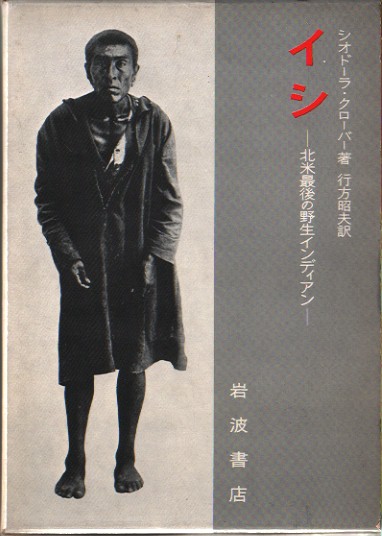
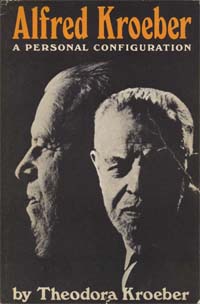
+++++++++++++++++++++++++++++++++++++++++++++++++++++++++++++++++++++++
アルフレッド・ルイ ス・クローバー(ウィキペディア 日本語)[→サイト内リンク:アルフレッド・ルイス・クローバー]
「アルフレッド・ルイス・クローバー(Alfred Louis Kroeber、1876年6月11日 - 1960年10月5日)は、アメリカ合衆国の文化人類学者。20世紀前半の学界人中、最もその影響力の大きかった人物のひとり。ニュージャージー州ホー ボーケンのドイツ系」プロテスタントのフランスの時計輸入業者の家庭(母、ユダヤ系Johanna Muller; 父、 10歳時に米国に移民したFlorence Kroeber)に生まれる。 「1901年コロンビア大学で、フランツ・ボアズの指導のもとで、自分が生まれ育ったアラパホー地方でのフィールドワークに関する論文で学位を取得。その 学 者としてのキャリアの大半をカリフォルニア州で過ごし、その殆どがカリフォルニア大学バークレー校に於いてであった。カリフォルニア大学の人類学部の本館 は、彼にちなんでクローバーホールとして知られている。 一般には文化人類学者として知られているが、考古学においても重要な業績を挙げており、また考古学と文化の関連付けを行う上での人類学への貢献も大きい。 ニューメキシコ、メキシコ、ペルーで何度か発掘活動の指揮を取ったこともある。 クローバーと彼の弟子たちは、アメリカ合衆国の西海岸におけるネイティブ・アメリカンの諸部族の文化的データを収集し、それを一冊の報告に纏め上げてい る。これは、Handbook of Indians of California (1925)として刊行されている。こうした既に消え去った部族の情報を保存しようとする試みは、今日では "Salvage ethnography" の名で呼ばれるようになった。文化地域や文化的配置といった概念を考え出し、広めたことでも知られている (Cultural and Natural Areas of Native North America, 1939年)。 影響力は、非常な大きなものがあり、多くの同時代人はあごひげと口ひげを蓄えた彼の風貌を、ほとんど社会科学者とはかくあるものと看做したほどである。ク ローバーとローランド・ディクソンは、北米でのネイティヴ・アメリカンの言語の発生的な分類においても大きな影響を及ぼしている。ペヌーティ語族とホカ大 語族のような分類には彼等の所説が考慮されている。 ヤヒ族の生き残りイシと一緒に仕事をしたことでも有名。イシは、カリフォルニアの部族ヤヒ族の最後の生き残りと言われているが、その信憑性には異論がない わけではない。彼の二番目の妻シオドーラ・クローバーは、よく知られているイシの伝記『イシ 二つの世界に生きたインディアンの物語』(岩波書店)を書いている。 彼の手による教科書『文化人類学』(Anthropology、1923年、1948年)は、長く」利用された。「2度目の妻のシオドーラ・クロー バーとの間に学者カール・クローバーと作家アーシュラ・K・ル=グウィンという子供をもうけている。シオドーラとの最初の結婚によって生まれた二人の子ど もも認知しており、テッドと歴史家のクリフトン・クローバーである。クリフトンとカールは、最近(2003年)、一緒にイシのケースについて一冊の本、 Ishi in Three Centuries. を纏め上げた。これは、イシについて、アメリカインディアンの手になるエッセイも収録した初めての学術書となるものである」アルフレッド・ルイス・クローバー)
学問的影響 Alfred
Louis Kroeber, 1876-1960.
1) Although he is known primarily as a cultural anthropologist, he did significant work in archaeology and anthropological linguistics, and he contributed to anthropology by making connections between archaeology and culture. He conducted excavations in New Mexico, Mexico, and Peru. In Peru he helped found the Institute for Andean Studies (IAS) with the Peruvian anthropologist Julio C. Tello and other major scholars.
2) Kroeber and his students did important work collecting cultural data on western tribes of Native Americans. The work done in preserving information about California tribes appeared in Handbook of the Indians of California (1925). In that book, Kroeber first described a pattern in California groups where a social unit was smaller and less hierarchically organized than a tribe,[8][9] which was elaborated upon in The Patwin and their Neighbors[10] in which Kroeber first coined the term "tribelet" to describe this level of organization. Kroeber is credited with developing the concepts of culture area, cultural configuration (Cultural and Natural Areas of Native North America, 1939), and cultural fatigue (Anthropology, 1963).
3) Kroeber's influence was so strong that many contemporaries adopted his style of beard and mustache as well as his views as a cultural historian.[11] During his lifetime, he was known as the "Dean of American Anthropologists". Kroeber and Roland B. Dixon were very influential in the genetic classification of Native American languages in North America, being responsible for theoretical groupings such as Penutian and Hokan, based on common languages.
4) He is noted for working with Ishi, who was claimed to be the last California Yahi Indian. (Ishi may have been of mixed ethnic heritage, with a father from the Wintu, Maidu or Nomlaki tribes.)[12] His second wife, Theodora Kracaw Kroeber, wrote a well-known biography of Ishi, Ishi in Two Worlds. Kroeber's relationship with Ishi was the subject of a film, The Last of His Tribe (1992), starring Jon Voight as Kroeber and Graham Greene as Ishi.[13][14]
5) Kroeber's textbook,
Anthropology (1923, 1948), was widely used for many years. In the late
1940s, it was one of ten books required as reading for all students
during their first year at Columbia University. His book,
Configurations of Cultural Growth (1944), had a lasting impact on
social scientific research on genius and greatness; Kroeber believed that genius arose out of
culture at particular times, rather than holding to "the great man"
theory.[15]
年譜
1840s Approximately 400
Yahi people exist in California; total Yana people estimated at
1500.(イシ関連の情報は"THE
STORY OF ISHI: A CHRONOLOGY by Nancy Rockafellar" による)
1849 California Gold Rush begins.
1860 Ishi's birth ca
1860.
1860〜1865年ごろ
「ゴールドラッシュとともに押し寄せた開拓者たちの
組織的な虐殺や強制移住によって、同地のインディアン部族が民族としての体を失い、南部におよそ400人を数えたヤヒ族も1865年以降たびたび大規模な
虐殺に見舞われた」イシ)
1865 The massacres of Yahi People begin, 74 killed.
1866 Three Knolls Massacre, 40 killed; Dry Camp Massacre, 33 killed.
1870-1911 Period of
Concealment: a remnant band (five to twenty individuals) of Yahi hide
in the Mill Creek area.
1871 Kingsley
Cave/Morgan Valley Massacre 30 killed.
1876 ドイツ移民の子としてニュージャージ州 ホー ボーケン(Hoboken, New Jersey)で生まれる。
1892 16歳でコロンビア・カレッジに入学
1896 英語学で学士
1897
21歳。ロマンス演劇で修士号。この前後でフランツ・ボアズ(Franz Boas, 1858-1942)に出会い人類学に専攻を転向する。スミス海峡で調査。
1897 ピアリーに連れてこられた北部エスキモー
のアタンガナが亡くなり、それに対するヌクタックの行動をとりあげる(→「お父
さんのからだを返して」)
1901 コロンビア大学で人類学博士号 (Ph.D):学位論文は、アラパホ先住民(the Arapaho)でのフィールドワークにもとづく装飾シンボリズムの研究(28ページの論文)。
1906 Henrietta
Rothschildと結婚(ヘンリエッタは、1913年に結核で死亡)
n.d.(ca.1908) カリフォルニア大学 バークレー校に赴任。カリフォルニア人類学博物館(現、Phoebe A. Hearst Museum of Anthropology)に着任(キュレーター:1908-1925)、館長(1925-1946) にも就任した。
1907 "Indian Myths of South Central California" (1907), in University of California Publications in American Archaeology and Ethnology 4:167-250. Berkeley (Six Rumsien Costanoan myths, pp. 199–202
1907
"The Religion of the Indians of California" (1907), in University of California Publications in American Archaeology and Ethnology 4:6. Berkeley, sections titled "Shamanism", "Public Ceremonies", "Ceremonial Structures and Paraphernalia", and "Mythology and Beliefs";
1908 November 10,1908: Surveying party surprises a band of four; Ishi escapes and hides; out of curiosity the surveyors take tools and artifacts from the camp.
1910 October, 1910:
T.T. Waterman leads an expedition into the Mill Creek area to attempt
to find the lost band of Indians, finds "incontrovertible evidence of
their existence in a wild state." No contact made.
1911
August 1911: Ishi walks out of Butte County wilderness into Oroville.「8月29日、ラッセン山麓の丘陵地帯にあった先祖伝来の土地を離れ、50歳前後の衰弱しきったイシひとりがサクラメント近郊の、オロ ヴィルの屠畜業者の囲いに迷い込んだ」イシ)
September 4, 1911: T.T. Waterman brings Ishi to San Francisco
October 1911: Museum of Anthropology opens at Parnassus; over the next six months, 24,000 people visit the museum and watch Ishi demonstrate arrowmaking and firebuilding.
November 22, 1911: Ishi hospitalized for respiratory infection; all TB diagnostic tests are negative.
December 26, 1911: Ishi
hospitalized with bronchopneumonia, photos and casts taken of his feet.
1912 ALK; Fellow of the American Academy of Arts and Sciences
September, 1912: Ishi hospitalized three days for abdominal pain.
Ishi becomes acquainted
with UC Surgeon, Dr. Saxton Pope; they begin archery collaboration.
1913 May 1913: Ishi hospitalized two days for back pain.
1914
May 1914: Pope does a complete clinical history of Ishi: "No Premonition of Illness."
Summer 1914: Ishi, Waterman, Pope and Kroeber Visit and map the Deer Creek area of Tehama county.
1915
December 10, 1914 to Feb. 1, 1915: Ishi hospitalized for 62 days, First Tubercular Diagnosis in early 1915.
Summer 1915: Linguistics work with Edward Sapir; Ishi stays with Watermans at Berkeley for three months and is "carefully looked after."
August 22, 1915: Ishi hospitalized for six weeks, then moved to the Museum of Anthropology.
August 28, 1915: Kroeber informs T.T. Waterman and Gifford of plans for Ishi's convalescence: "We have got to handle the case. The physicians go by the book and rule, and it's up to us to apply our knowledge of the individual and our judgment to their findings and advice. He undoubtedly has had TB since last winter, though for the last 6 months it has been only latent... We must let the doctors get their crack at him, but unless he has really broken I don't think they'll find out much... If he gets back to where he was all spring, I believe the same treatment is the only one--reasonable air, exercise and distraction, with every ready tab on the progress of the disease with scales and thermometer. If ...the disease continues active even though mild, I suggest sending him preferably to our former watchman...himself a lunger of ten years' standing; or if he won't have him, then to the Appersons. Pope has the only right idea, which is to handle him as a person, not as a hospital case....I sail for Europe Tuesday...for about two months then back here. [New York and the Museum of Natural History]
September 30, 1915:
Gifford replies, "Ishi has improved slowly, but he is a long way from
being on his feet. The doctors feel that he will be better off in our
building. ...the doctors say he is not in condition to move to the
country..."
1916
March 18, 1916: Ishi is readmitted to UC Hospital.
March 24, 1916: Kroeber
writes from New York to Gifford, ...
"I am very sorry. The
temperatures made me lose hope some time ago. Please stand by our
contingently made outline of action, and insist on it as my personal
wish. There is no objection to a cast. I do not however see that an
autopsy would lead to anything of consequence. I might be willing to
consent if it were to be a strict autopsy in the ordinary sense to
determine the cause of death, but as they know that, I suspect that the
autopsy would resolve itself into a general dissection. Please shut
down on it. As to disposal of the body, I must ask you as my personal
representative on the spot in this matter, to yield nothing at all
under any circumstances. If there is any talk about the interests of
science, say for me that science can go to hell. We propose to stand by
our friends. Besides, I cannot believe that any scientific value is
materially involved. We have hundreds of Indian skeletons that nobody
ever comes near to study. The prime interest in this case would be of a
morbid romantic nature. Please acquaint Waterman with my feelings; and
convey them also to Pope, toned down in form so as not to offend him,
but without concessions. When the time comes, please see that the
various people in the hospital are properly thanked. They have been
more than white./ You can get an individual plot in any of the public
cemeteries. Draw upon any money in our keeping, for this purpose
without question or formality, on my responsibility. As to monument and
care, we can see later. There is no use declaring an estate unless
there is official demand. Whatever balance remains after we get
through, I think should be turned over to the hospital for what they
have done. All this, however, can be arranged later. Yours, ALK."
March 25, 1916: Ishi
Dies at UC Hospital. Autopsy performed by Dr. Jean V. Cooke. Cause of
death: Advanced Pulmonary Tuberculosis. Dr. K. F. Meyer of the Hooper
Foundation is called in to consult on the route of infection.(Waterman,
Gifford and Pope are presumably present, Brain is removed, weighed,
examined macroscopically and preserved).
3月25日ヤヒ先住民のイシ(上掲写真参照)が結核 により死 亡。サンフランシスコ墓地に葬られたといわれたが、遺体(脳)はスミソニアン博物館の国立アメリカ・インディアン博物館に保管されていた。(イシ関連の情 報は"THE STORY OF ISHI: A CHRONOLOGY by Nancy Rockafellar" による)
March 30, 1916: Gifford reports to Kroeber, "Your letter of March 24 with instructions concerning the disposal of Ishi's body and estate was received too late to be of use. In disposing of his body I took the stand which you asked me to take some time ago: namely, that he have a Christian burial like any other friend. The only possible departures from your request lie in the fact that an autopsy was performed and that the brain was preserved. However, the matter, as you well know, was not entirely in my hands, as I am not the acting head of the department. In short, what happened amounts to a compromise between science and sentiment, with myself on the side of sentiment. Everything else was carried out as you would have done it yourself, I firmly believe. The Indian told Pope some time ago that the way to dispose of the dead was to burn them, so we undoubtedly followed his wishes in that matter. In the coffin were placed one of his bows, five pieces of dentalium, a box full of shell bead money which he had saved, a purse full of tobacco, three rings, and some obsidian flakes, all of which we felt sure would be in accord with Ishi's wishes. The remains are to be placed in a niche in the columbarium at Mount Olivet Cemetery. Pope and Waterman decided, and I agreed, that a small black Pueblo jar would be far more appropriate than one of the bronze or onyx urns which the Crematory has on sale. Tomorrow afternoon Pope and I are going down to place the ashes in this jar and put it in the niche purchased. Ishi died leaving $369.52. His estate went into the hands of the Public Administrator. This official, however has certainly been very obliging throughout. He has given us every aid and every advice. The money has been expended as follows:
Floral Piece at Museum $7.50
Funeral and Cremation $150.00
Niche in columbarium $40.00
County Tax $1.00
Hospital Bill $171.00
Out of the hospital bill of $171 will be deducted the charges of the Public Administrator's office. He kindly offered to cut his fee in half. The normal fee is fourteen percent (seven for the administrator and seven for the attorney) It has been cut as you see to three and one half percent for each of these men. This means of course seven percent of $369.50.
"The funeral was private, and no flowers were brought. Waterman, Pope, Loomis, Loud Warburton, Mason and myself were the only people who attended. We of course went to the crematory also. Sincerely, E. W. Gifford."
March 27, 1916: Private Funeral in the undertakers parlor, Waterman, Pope, Loud Warburton and Gifford accompanied the body to the cemetery where cremation occurred.
Mount Olivet files contain a receipt dated March 27, 1916 c/o Public administrator for $40.00 and an interment document describing name date of death, approx. age, color sex and place of birth. Cremation date listed as March 27, 1916.
March 31, 1916: Ishi's Ashes placed in a Pueblo jar and placed in the columbarium of Mount Olivet Cemetery.
March 31, 1916 Dr. Moffitt (Dean of the Medical School) thanks Waterman for his "kind note" and states "I do not think there ever was any idea of charging him [Ishi]."
October 27, 1916: Kroeber returns from sabbatical, writes to Curator of the National Museum, Ales Hrdlicka , "I find that at Ishi's death last spring his brain was removed and preserved. There is no one here who can put it to scientific use. If you wish it, I shall be glad to deposit it in the National Museum collection."
In January, 1917 the
Anthropology recorder for the U.S. National Museum asks for
clarification...stating that the museum "does not know certainly
whether the specimen is deposited in, or presented to, the National
Museum, nor whether it comes from you personally, or from the
University through your good offices..." Kroeber replies, "Ishi's brain
was sent to the National Museum as a gift with the compliments of the
University of California. I believe there would be some question as to
who was the legal possessor before it was sent to Dr. Hrdlicka. If you
will enter as donor the Department of Anthropology of the University of
California, I think your record will be as accurate as you can make it."
1917
January 1917: The (Ishi's) brain is shipped to Washington and accessioned by the Smithsonian, accession number 60884, museum number 298736. For sixty-four years it is stored in a ground glass jar in the "Division of Collections" of the Physical Anthropology Labs on the third floor of the Natural History Building. In 1981 the soft Tissue collections are rehoused and moved to Hall 25, stainless steel tank#6 and the catalogue number is attached by two permanent string tags. In 1994 the body part was moved to Third Pod, Museum Support Center. A 1999 observer reports that the brain appears to be still intact.
(イ
シの)脳はワシントンに運ばれ、スミソニアン博物館に収蔵される(収蔵番号60884、博物館番号298736)。この脳は64年間、自然史博物館3階の
人類学研究所の「コレクション部門」で、すりガラスの瓶に保管された。1981年、軟組織コレクションは再びホール25のステンレスタンク#6に移され、
カタログ番号が2つの永久紐付きタグで付けられる。1994年、身体部分は博物館サポートセンターのサード・ポッドに移された。1999年の観察者の報告
によると、脳はまだ無傷のようである。
ALK; President of the American Anthropological Association (1917–1918)
Orin Starn recontacts the Smithsonian, finds new documents in the Bancroft library, proof that Kroeber shipped the brain in 1917, 1998-1999.
1920
Julio C. Tello
during an archaeological expedition
1923 Anthropology:
Culture Patterns & Processes (1963). New York: Harcourt, Brace
& World (earlier editions in 1923 and 1948).
1925 Handbook
of the
Indians of California (1925), Washington, D.C: Bureau of American
Ethnology Bulletin No. 78
1926 Theodora Kracaw Brown(1897-1979)と再婚。
1929年10月21日:アーシュラ・クローバー・ ル=グウィン(Ursula Kroeber Le Guin , 1929-January 22, 2018)は「カリフォルニア州バークレーで生まれた。父親はドイツ系の文化人類学者のアルフレッド・L・クローバーで、1901年にコロンビア大学でア メリカ合衆国初の人類学の博士号を取得し、カリフォルニア大学バークレー校でアメリカで2番目の人類学科を創設した[2]。母親は、夫が研究で係わったア メリカ最後の生粋のインディアン「イシ」の伝記を執筆した作家のシオドーラ・クラ コー・ブラウン。夫の伝記 Alfred Kroeber: A Personal Configuration も書いており、ル=グウィンの幼少期を知るためのよい資料となっている。この年代においては、カトリックの聖女である聖ウルスラ(Saint Ursula)は、教会 典礼暦に掲載される聖人で、その祝日はこの日だった。このため、聖ウルスラに因んで、アーシュラ(Ursula)と名づけられた」アーシュラ・クローバー・ル=グウィン(ウィキペディア)
1939 Cultural
and natural areas of native North America / by A.L. Kroeber,
Berkeley ; Los Angeles : University of California Press , [1963], c1939
1943 『フィ リッピン民族誌』三省堂
1944 Configurations
of culture growth / by A.L. Kroeber, Berkeley ; Los Angeles :
University of California Press , c1944
1948
Anthropology: Culture Patterns & Processes (1963). New York: Harcourt, Brace & World (earlier editions in 1923 and 1948).
Anthropology
: race, language, culture, psychology, prehistory / Kroeber
1952 The Nature of Culture (1952). Chicago.
1952
with Clyde Kluckhohn: Culture. A Critical Review of Concepts and Definitions (1952). Cambridge.
The
nature of culture / by A.L. Kroeber
1959 シオドラ、カリフォルニア先住民の伝記集 である"The Inland Whale"を出版。The Inland Whale. Illustrated by Joseph Crivy. 1959. Indiana University Press, Bloomington.
1960 10月5日パリにて、アルフレッドが死去
(84歳)。
1961
シオドラ、イシの伝記"Ishi in Two Worlds: a biography of the last wild Indian in North America"を出版。
Theodora Kroeber
publishes Ishi in Two Worlds: A Biography of the Last Wild Indian in
North America (Berkeley and Los Angeles: University of California
Press, 1961).
1963 Anthropology : biology & race
/ A.L. Kroeber, New York : Harcourt, Brace & World , 1963
1964
Theodora Kroeber, Ishi, Last of His Tribe. Illus. Ruth Robbins. 1964. Parnassus Press, Berkeley, California.
Theodora Kroeber
publishes a children's book, Ishi, Last of His Tribe (Boston: Houghton
Mifflin co., 1964).
1965 Source book in anthropology / by A.L. Kroeber and T.T. Waterman, Rev. ed. - New York : Johnson Reprint , 1965. (1931; 1959)
1967 Theodora Kroeber,
A Green Christmas. Picture book illus. John M. Larrecq. 1967. Parnassus
Press.
1968 Theodora Kroeber,
Almost Ancestors: The First Californians. Kroeber and Robert F. Heizer.
1968. Sierra Club Books, San Francisco.
1970 Theodora Kroeber, Alfred Kroeber: A Personal Configuration. 1970. University of California Press, Berkeley.
1971 『文明の歴史像:人類学者の視点』社会思 想社
1973 Alfred
Kroeber / Julian H. Steward, New York : Columbia University Press.
1976 Theodora Kroeber, Drawn from Life: California Indians in Pen and Brush. Compiled by Kroeber, Robert F. Heizer and Albert B. Elsasser. 1976. Ballena Press, Socorro, New Mexico.
1977 Theodora Kroeber,
Carrousel. Illus. Douglas Tait. 1977. Atheneum Books. New York :
Columbia University Press , 1973. - (Leaders of modern anthropology
series)
1979 Theodora Kroeber, Ishi, the Last Yahi: A Documentary History. Kroeber and Robert F. Heizer. 1979. University of California Press, Berkeley. シオドラ死去(82歳)。
1983 『様式と文明』創文社
1989 the American Indian Act of 1989
1990 Native American Grave Protection and Repatriation Act
Native American Grave
Protection and Repatriation Act is passed in 1990, requiring all
federal agencies and museums receiving federal funds to inventory and
identify the items, notify the affected tribes and make arrangements to
return such items if the appropriate tribe made a request.The
Smithsonian is exempt from NAGPRA, and would be governed by provisions
of the 1989 NMAI Act.
1997
Spring, 1997: Four federally recognized Maidu tribes (The Enterprise tribe, The Mooretown Tribe, The Berry Creek Tribe and the Mechoopda Tribe) unite to form the Butte County Native American Cultural Committee and elect Mr. Art Angle chair of the BCNACC.
May 14, 1997: The BCNACC passes Resolution 97-01 authorizing the BCNACC with the support of the Forest Service, City of Oroville, Chamber of Commerce, Butte County Board of Supervisors and the Native American Elders, to "locate and place Ishi's remains and spirit to his native Homeland."
June 6, 1997: Los Angeles Times article by Mary Curtius alerts UCSF officials to the possibility that the brain was not cremated along with Ishi's other remains. UCSF Vice Chancellor for Academic Affairs initiates an internal investigation by a pathologist and a research historian.
October, 1997: Berkeley
investigation fails to find further information on the brain's removal;
letter sent to Arthur Angle and the BCNACC.
1998
The National Museum of the American Indian Act of 1989 mandates that the Smithsonian Institution inventory, document, and, if requested repatriate culturally affiliated human remains and funerary objects to federally recognized Native American tribes. The 1996 amendment establishes deadlines for the distribution of summaries and inventories of human remains and associated funerary objects which are to be completed and submitted to Native groups by June 1, 1998.
June 16, 1998: UCSF investigation leads to the Smithsonian, but the Director of the American Indian Program tells UCSF representative that the brain is "old folklore and it doesn't exist."
December 16, 1998: UC
Research Historian meets at UCSF with Orin Starn, Associate Professor
of Anthropology, Duke University, to discuss the research on the
whereabouts of Ishi's brain.
1999
December 1998-January 1999: Orin Starn recontacts the Smithsonian, finds new documents in the Bancroft library, proof that Kroeber shipped the brain in 1917.
January 27, 1999: Presence of the brain at the Smithsonian is confirmed personally in a meeting between Thomas Killion of the Smithsonian repatriation office, and Orin Starn.
January 28, 1999: Butte County Native American Cultural Committee is notified by Orin Starn, who expresses his "support and admiration for your efforts to see that Ishi is finally laid to rest in a proper way."
February 17, 1999: UCSF report filed by the UCSF Research Historian, calls for UC support for repatriation and reunification of Ishi's remains.
February 19, 1999: UCSF press release on the "Discovery" of Ishi's brain leads to national news coverage.
February 23, 1999: The Butte county Native American Cultural Committee holds a press conference in Oroville, and announces "it is important to remember that the Native Americans feel that a complete body is necessary to proper burial and release of the spirit. Ishi was the last Yahi Indian, the last of his tribe that was lost forever from mother earth...in this discovery of the missing body part, we now can proceed with the repatriation of our red brother." The BCNACC announces it s intentions to travel to the Smithsonian to view the missing body part, and "assuming the viewing goes well, we will be seeking the full cooperation of the University of California and the Smithsonian Institution in the proper repatriation of all of Ishi's remains for a proper Native American burial."
March 24, 1999: eight representative members of the BCNACC visit the Smithsonian to view the brain and conduct a cleansing ceremony.
March 23-25, 1999: Press reports the Smithsonian's announcement that it will repatriate Ishi's brain to lineal descendants or culturally affiliated people, and members of the BCNACC have no cultural affiliation with the Yahi. The press reports "No Happy Ending in Sight for Ishi's Brain."
March 25, 1999: Assembly Concurrent Resolution No. 25 Relative to the University of California, "urges the Regents of the University of California to immediately take any and all actions necessary to ensure that the remains of Ishi be returned to the appropriate tribal representatives...urges the Governor to direct all affected state agencies to cooperate in the effort to return the remains of Ishi so that a proper Indian burial ceremony may take place and closure may be brought to this indignity..."
April 5, 1999: California State Legislature Oversight Hearing "on the subject of the remains of Ishi and the disposition of Native American remains and artifacts."
May 1999: After a month of investigation, the Smithsonian identifies the people of the Redding Rancheria and the Pit River tribe as Ishi's closest relations and therefore designated recipients of Ishi's remains.
2000
April 12, 2000: The California state attorney general's office obtains a court order from San Mateo county for the removal of Ishi's ashes from the Colma cemetery for reburial by the designated Native American people according to their customs.
May 12 and 13, 2000:
The Butte County Native American Cultural Committee organize a
conference in Oroville to memorialize Ishi.
2003
Clifton and Karl
Kroeber published a book of essays on Ishi's story, which they
co-edited, called, Ishi in Three
Centuries.[Univ. of Nebraska Press
ISBN 0803222505] This is the first scholarly book on Ishi to contain
essays by Native American writers and academics.
| Orin Starn is an
anthropologist and writer at Duke University. Starn is the author of Ishi's Brain: In Search of America's Last Wild Indian and co-author of The Shining Path: Love, Madness, and Revolution in the Andes with Miguel La Serna; his other books include The Passion of Tiger Woods: An Anthropologist Reports on Golf, Race, and Celebrity Scandal, Nightwatch: The Politics of Protest in the Andes, and he is co-editor of The Peru Reader,[1] Between Resistance and Revolution, and Indigenous Experience Today. Starn has chaired the Duke Cultural Anthropology department, directed the Duke Center for Latin American and Caribbean Studies and been the faculty director of the Duke Human Rights Center. He has appeared on many radio and television programs, and writes for newspapers including the Los Angeles Times and Chronicle of Higher Education. Starn teaches courses about Latin America, Native American culture and politics, human rights, and sports and society, among other issues. Starn won Duke University’s Robert B. Cox Distinguished Teaching Award in 2004[2] and was awarded the Sally Dalton Robinson Distinguished Professorship effective July 1, 2005.[3] |
オーリン・スターンはデューク大学の人類学者で作家。 著書に『Ishi's Brain: In Search of America's Last Wild Indian(アメリカ最後の野生のインディアンを探して)』、『The Shining Path(シャイニング・パス)』の共著者: 他の著書に『The Passion of Tiger Woods(タイガー・ウッズの情熱)』がある: その他の著書に『The Passion of Tiger Woods: An Anthropologist Reports on Golf, Race, and Celebrity Scandal(タイガー・ウッズの情熱:人類学者によるゴルフ、人種、セレブのスキャンダル)』、『Nightwatch: また、『The Peru Reader』、『Between Resistance and Revolution』、『Indigenous Experience Today』の共同編集者でもある。デューク大学文化人類学部の学部長、デューク・ラテンアメリカ・カリビアン研究センター所長、デューク人権センター教 授を歴任。 ラジオやテレビ番組にも多数出演し、ロサンゼルス・タイムズやクロニクル・オブ・ハイヤー・エデュケーションなどの新聞にも寄稿している。ラテンアメリ カ、ネイティブ・アメリカンの文化と政治、人権、スポーツと社会などについての講義も行っている。2004年にデューク大学のロバート・B・コックス特別 教授賞を受賞し[2]、2005年7月1日付でサリー・ドルトン・ロビンソン特別教授職を授与された[3]。 |
| Starn was involved in the
repatriation to California of the remains of Ishi, the last Yahi
Indian.[4] This search was reported in the New York Times and NPR, and
Starn's book Ishi's Brain gives an account of it as well as the story
of Ishi's life.[5] Ishi's Brain was a San Francisco Chronicle Best Book
of 2004.[6] He has also written extensively about war and society in Peru, including The Shining Path, Nightwatch and The Peru Reader as well as several books in Spanish. A book Starn co-edited with Marisol de la Cadena, Indigenous Experience Today, explores the global rise of indigenous politics and activism. |
スターンは、ヤヒ族最後のインディアンであるイシの遺骨をカリフォルニ
アに送還する作業に携わった[4]。この捜索はニューヨーク・タイムズ紙やNPRで報道され、スターンの著書『Ishi's
Brain』には、その記録とイシの生涯が記されている[5]。 また、『シャイニング・パス』、『ナイトウォッチ』、『ペルー・リーダー』など、ペルーの戦争や社会について幅広く執筆しているほか、スペイン語の本も数 冊出版している。マリソル・デ・ラ・カデナとの共編著『Indigenous Experience Today』では、先住民の政治と活動の世界的な台頭を探求している。 |
| Sports, Society, and the College
Athletics Starn has done research on sports and society, and appeared on ESPN and various sports talk shows. His online course “Sports and Society” has drawn thousands of students worldwide. He also maintains a related blog at Golf Politics. Starn wrote op-eds in North Carolina newspapers about the 2006 Duke University lacrosse case (among them, Let's talk sports[7]) and was quoted in other outlets, including The New Yorker [8] and The News & Observer. [9] During the case, Starn took issue with some of Duke Basketball Coach Mike Krzyzewski's actions. In a June 21, 2006 article in The News & Observer, Starn was quoted as stating, "Whether Coach Krzyzewski likes it or not, these are serious issues and issues being raised at colleges around the country."[9] He also accused bloggers of inaccurately portraying the involvement of Duke faculty in the lacrosse case in a January 2007 op-ed in the Durham Herald-Sun. Starn has cited the incident in his criticism of Duke's participation in Division I athletics. In another News & Observer article, Starn was quoted as stating, "It's ridiculous to talk about a balance between athletics and academics... Athletics should be a subset underneath a university's main mission... The idea that athletics should have near-equal weight with academics is just wrong."[10] |
スポーツ、社会、そして大学体育会 スターンはスポーツと社会に関する研究を行い、ESPNやさまざまなスポーツトーク番組に出演している。彼のオンライン講座「スポーツと社会」は世界中で 数千人の受講生を集めている。Golf Politicsで関連ブログも運営している。 2006年のデューク大学ラクロス事件については、ノースカロライナ州の新聞に論説を寄稿し(なかでも『Let's talk sports』[7])、『ニューヨーカー』誌[8]や『ニューズ&オブザーバー』誌などでも引用された。[9] 事件中、スターンはデューク大学バスケットボールコーチのマイク・クシジェフスキの行動を問題視した。2006年6月21日付のThe News & Observer紙の記事で、スターンは「クシジェフスキ・コーチが好むと好まざるとにかかわらず、これらは深刻な問題であり、全米の大学で提起されてい る問題である」と述べた[9]。また、2007年1月付のDurham Herald-Sun紙の論説で、ラクロス事件におけるデューク大学教員の関与を不正確に描写しているブロガーを非難した。 スターン氏は、デューク大学のディビジョンI陸上競技への参加を批判する際に、この事件を引き合いに出している。ニューズ&オブザーバーの別の記事で、ス ターン氏は「体育と学業のバランスについて語るのは馬鹿げている...。陸上競技は大学の主要な使命のサブセットであるべきだ。陸上競技が学業とほぼ同等 の比重を持つべきだという考えは間違っている」[10]。 |
| Writings The Shining Path: Love, Madness, and Revolution in the Andes. Co-author with Miguel La Serna. New York: W. W. Norton, 2019. The Passion of Tiger Woods: An Anthropologist Reports on Golf, Race, and Celebrity Scandal. Durham: Duke University Press (2011) Ishi's Brain: In Search of America's Last 'Wild' Indian. New York: W. W. Norton, 2004. Nightwatch: The Politics of Protest in the Andes. Durham, NC: Duke UP, 1999. "Maoism in the Andes: The Communist Party in Peru -- Shining Path and the Refusal of History." In Critical Perspectives on Mao Zedong's Thought. Edited by Arif Dirlik, Paul Healy, and Nick Knight. Atlantic Highlands, NJ: Humanities Press, 1997. 267-288. Between Resistance and Revolution: Cultural Politics and Social Protest Co-editor with Richard G. Fox. New Brunswick, NJ: Rutgers UP, 1997. The Peru Reader: History, Culture, Politics. Co-editor with Carlos Ivan Degregori and Robin Kirk. Durham, NC: Duke UP, 1995. Indigenous Experience Today (co-editor) Here Come the Anthros (2009) Nursing the Revolution (1991) The Revolt against Revolution (1995) |
著作 『輝ける道:アンデスにおける愛、狂気、そして革命』ミゲル・ラ・セルナとの共著。ニューヨーク:W. W. Norton、2019年。 『タイガー・ウッズの情熱:ゴルフ、人種、セレブのスキャンダルに関する人類学者の報告』デューク大学出版(2011年) イシの脳:アメリカ最後の「野生」インディアンを求めて。ニューヨーク:W. W. Norton、2004年。 ナイトウォッチ:アンデスにおける抗議の政治。ノースカロライナ州ダーラム:デューク大学出版、1999年。 「アンデスにおける毛沢東主義:ペルー共産党――シャイニング・パスの歴史拒絶」『毛沢東思想に関する批判的視点』アリフ・ダリク、ポール・ヒーリー、 ニック・ナイト編。ニュージャージー州アトランティック・ハイランズ:Humanities Press、1997年。267-288ページ。 『抵抗と革命の間:文化政治と社会抗議』リチャード・G・フォックスとの共編著。ニュージャージー州ニューブランズウィック:ラトガース大学出版、 1997年。 ペルー読本:歴史、文化、政治。カルロス・アイヴァン・デグレゴリ、ロビン・カークとの共編。ノースカロライナ州ダーラム:デューク大学出版、1995 年。 先住民の今日的経験(共編) アンソロジー(2009年) 革命の看護(1991年) 革命に対する反乱(1995年) |
| https://en.wikipedia.org/wiki/Orin_Starn |
|
★クレジット:イシ:Ishi c. 1861-1916,
ひとりのヤヒ先住民(池田光穂)
インターネット・アーカイブ
- The Religion of the Indians of California by A. L. Kroeber
- Seven Mohave Myths by A. L. Kroeber
- Mohave Pottery
by Michael J. Harner and A. L. Kroeber
リンク
- Alfred L. Kroeber, by Wiki
- Internet Archives on Alfred Kroeber
- ︎アレッシュ・ヘルドリチカ▶︎アルフレッド・ルイス・クローバー▶︎︎ホアン・ドロレス▶︎▶︎︎▶︎▶︎︎▶︎▶︎︎▶︎▶︎
文献
- 手塚治虫「原人イシの物語」『タイガーブックス』所収、講談社、1978年(初出は『少年サンデー』昭和50(1975)年10月20日 増刊号)[→ Osamu_T_Ishi1975.pdf]
- イシ : 北米最後の野生インディアン / シオドーラ・クローバー著 ; 行方昭夫訳, 東京 : 岩波書店 , 1991.9. - (同時代ライブラリー ; 80)
- Ishi's brain : in search of America's last "wild" Indian /
Orin Starn, W.W. Norton , 2004.
その他の情報
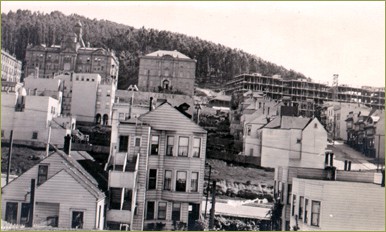
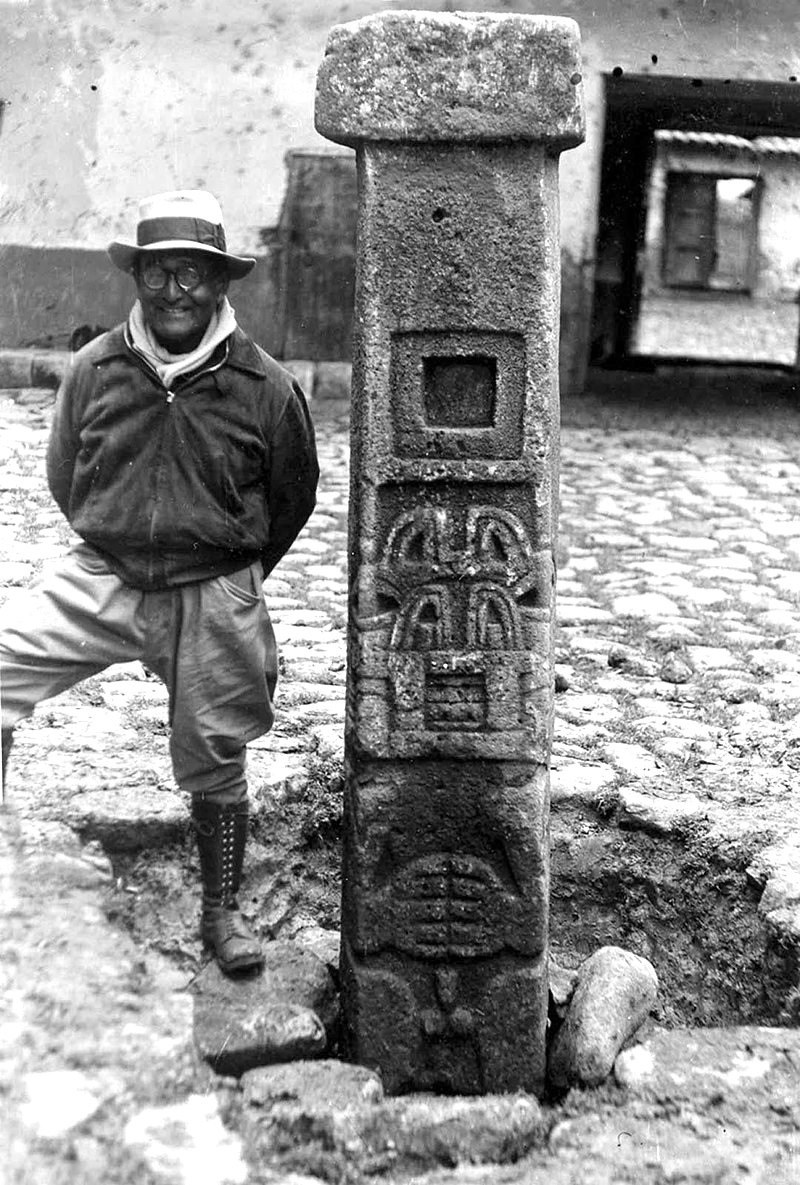
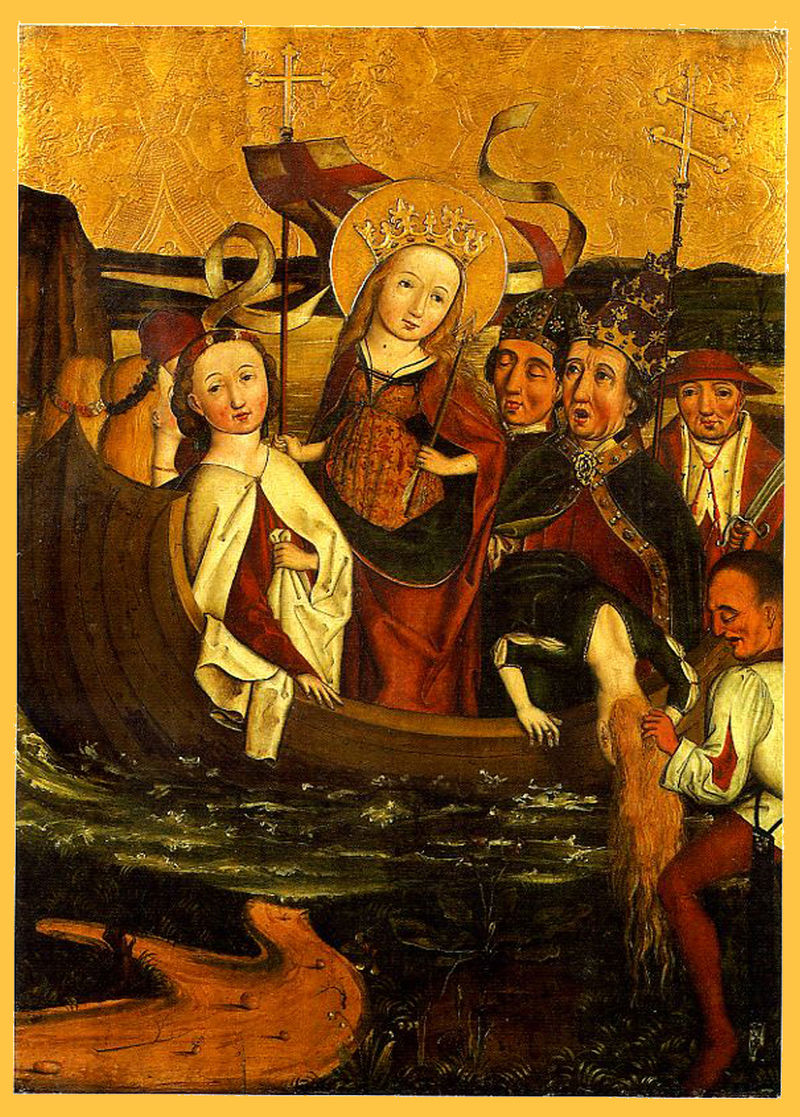
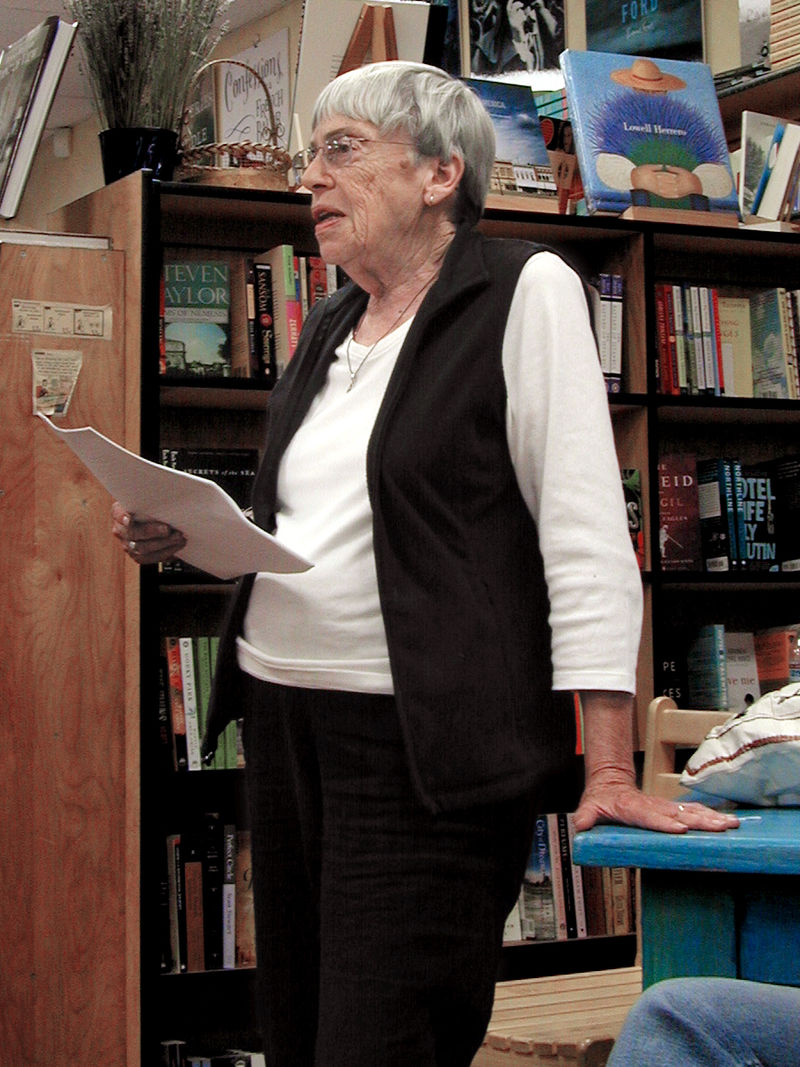
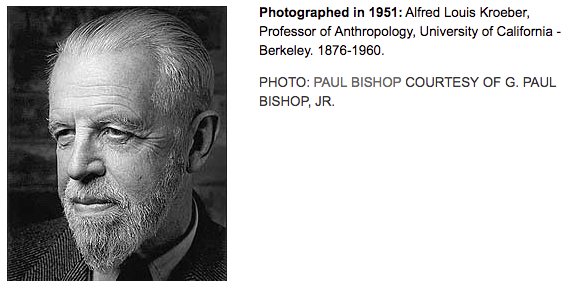
 Copyleft,
CC, Mitzub'ixi Quq Chi'j, 1996-2099
Copyleft,
CC, Mitzub'ixi Quq Chi'j, 1996-2099